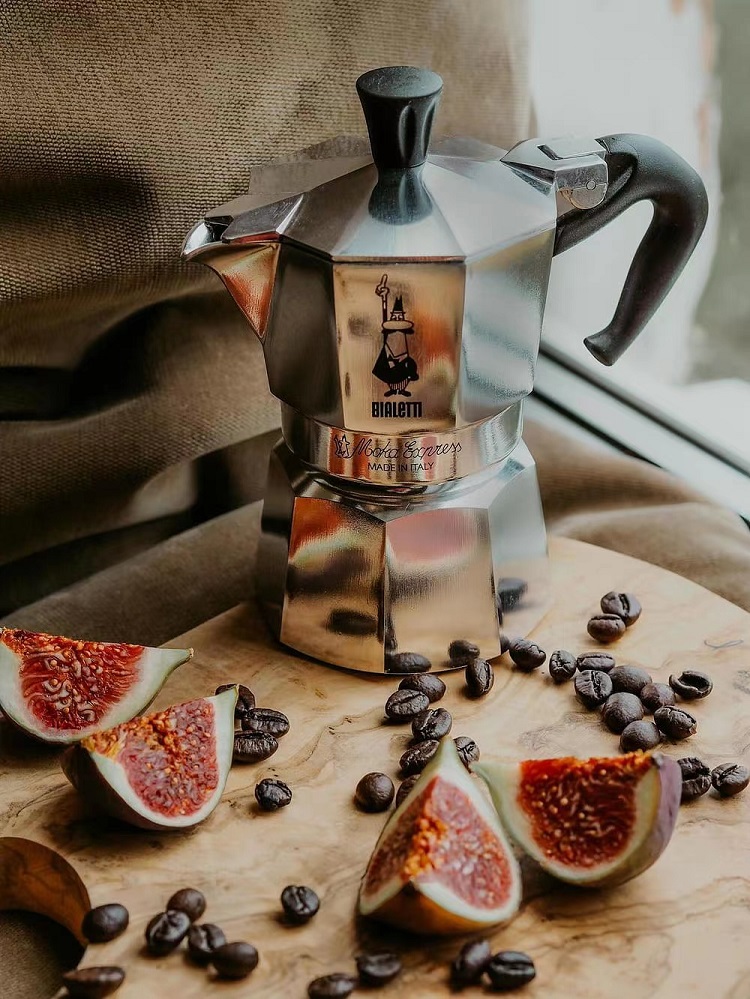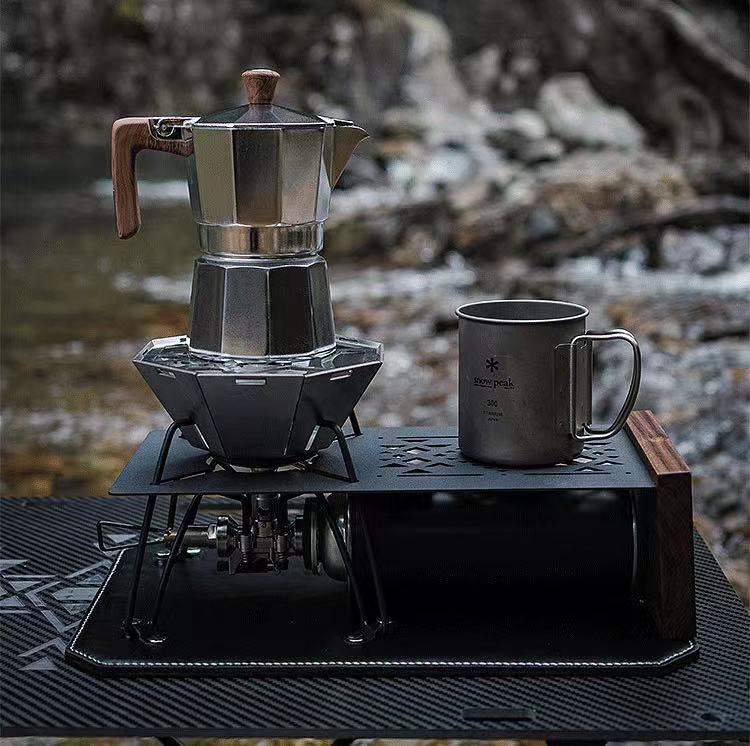Let’s learn about a legendary coffee utensil that every Italian family must have!
The mocha pot was invented by Italian Alfonso Bialetti in 1933. Traditional mocha pots are generally made of aluminum alloy material. Easy to scratch and can only be heated with an open flame, but cannot be heated with an induction cooker to make coffee. So nowadays, most mocha pots are made of stainless steel.
The principle of extracting coffee from a mocha pot is very simple, which is to use the steam pressure generated in the lower pot. When the steam pressure is high enough to penetrate the coffee powder, it will push the hot water to the upper pot. The coffee extracted from a mocha pot has a strong taste, a combination of acidity and bitterness, and is rich in oil.
Therefore, the biggest advantage of a mocha pot is that it is small, convenient, and easy to operate. Even ordinary Italian women can master the technique of making coffee. And it’s easy to make coffee with a strong aroma and golden oil.
But its drawbacks are also very obvious, that is, the upper limit of the flavor of coffee made with a mocha pot is low, which is not as clear and bright as handmade coffee, nor is it as rich and delicate as the Italian coffee machine. Therefore, there are almost no mocha pots in boutique coffee shops. But as a family coffee utensil, it is a 100-point utensil.
How to use a mocha pot to make coffee?
The tools required include: mocha pot, gas stove and stove frame or induction cooker, coffee beans, bean grinder, and water.
1. Pour purified water into the lower pot of the mocha kettle, with the water level about 0.5cm below the pressure relief valve. If you don’t like the strong taste of coffee, you can add more water, but it should not exceed the safety line marked on the coffee pot. If the coffee pot you purchased is not labeled, remember not to exceed the pressure relief valve for water volume, otherwise there may be safety hazards and significant harm to the coffee pot itself.
2. The grinding degree of coffee should be slightly thicker than that of Italian coffee. You can refer to the size of the gap in the filter of the powder tank to ensure that the coffee particles do not fall off the pot. Slowly pour the coffee powder into the powder tank, gently tap to evenly distribute the coffee powder. Use a cloth to flatten the surface of the coffee powder in the form of a small hill. The purpose of filling the powder tank with the powder is to avoid poor extraction of defective flavors. Because as the density of coffee powder in the powder tank approaches, it avoids the phenomenon of over extraction or insufficient extraction of some coffee powder, leading to uneven flavor or bitterness.
3. Place the powder trough into the lower pot, tighten the upper and lower parts of the mocha pot, and then place it on an electric pottery stove for high heat heating;
When the mocha pot heats up to a certain temperature and the mocha pot emits a noticeable “whine” sound, it indicates that the coffee has been brewed. Set the electric pottery stove to low heat and open the lid of the pot.
5. When the coffee liquid from the kettle is halfway out, turn off the electric pottery stove. The residual heat and pressure of the mocha pot will push the remaining coffee liquid into the upper pot.
6. When the coffee liquid has been extracted to the top of the pot, it can be poured into a cup to taste. The coffee extracted from a mocha pot is very rich and can extract Crema, making it the closest to espresso in taste. You can also mix it with an appropriate amount of sugar or milk to drink.
Post time: Sep-27-2023







